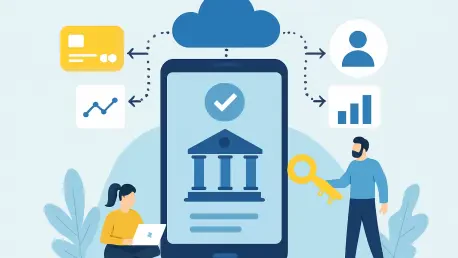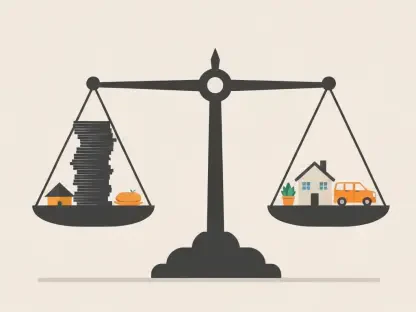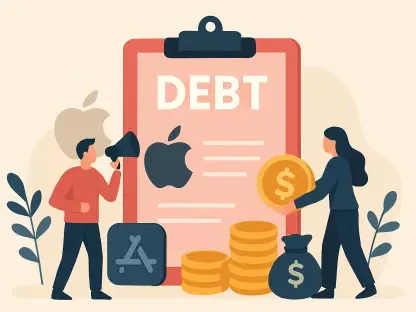I’m thrilled to sit down with Priya Jaiswal, a distinguished expert in banking, business, and finance, whose deep knowledge in market analysis, portfolio management, and international business trends offers invaluable insights into the evolving world of open banking. Today, we’ll explore the core concepts of open banking, its progress in the U.S. compared to global markets, the technological shifts driving data sharing, and the complex interplay between banks, fintechs, and regulatory challenges. Let’s dive into this fascinating discussion about how financial data is reshaping consumer experiences and industry dynamics.
Can you explain what open banking is in simple terms and why it matters to everyday people?
Absolutely. Open banking is essentially about giving consumers control over their financial data. It allows people to securely share their banking information—like account balances or transaction history—with third-party providers, often through apps or services. The idea is to make it easier for individuals to access better financial tools, whether that’s a budgeting app, a loan comparison service, or a new payment platform. For everyday folks, it means more personalized options, potentially lower costs, and the ability to switch between providers without hassle, all while fostering competition in the financial sector.
How does the development of open banking in the U.S. compare to regions like Europe?
The U.S. is definitely on a different trajectory compared to Europe. Over there, open banking has been driven by strong regulatory frameworks like PSD2, which mandates banks to share data with third parties when customers consent. It’s more mature, with widespread adoption. In the U.S., however, we’re seeing a more market-driven approach, with progress happening through voluntary partnerships rather than strict government rules—at least for now. The pace is slower, partly due to regulatory uncertainty and resistance from some traditional banks, but the demand from consumers and fintechs is pushing things forward.
What’s driving the surge in API connections within the financial industry?
APIs, or application programming interfaces, have become the backbone of data sharing in finance because they’re secure and efficient. Recent data shows a 50% growth in API connections over the past year, reaching around 114 million. They’ve become the preferred method because they allow direct, standardized communication between systems, unlike older methods that were clunky and risky. APIs ensure data is shared with consumer permission in a structured way, reducing errors and enhancing security, which is a win for both providers and users.
Why is the industry moving away from screen scraping, and what issues does it pose?
Screen scraping was once the go-to method for data sharing, where a third party would log into a consumer’s bank account with their credentials to pull information. It’s outdated and problematic—prone to errors, inefficiencies, and serious fraud risks since it often involves sharing sensitive login details. There’s also no real control over what data gets accessed. The shift to APIs addresses these issues by creating a more secure, permission-based system where consumers decide exactly what information is shared and with whom.
How are banks and fintech companies collaborating to make open banking work?
Collaboration is key right now, and we’re seeing more bilateral agreements between banks and fintechs to define how data is shared. These deals often outline terms like data access, security standards, and sometimes even fees. Many are market-driven, spurred by consumer demand for innovative services rather than government mandates. These partnerships help manage risks around liability and data protection, filling in gaps where regulations might not yet be clear, and they’re crucial for scaling open banking safely.
What’s your take on some banks starting to charge fees for data access through APIs?
It’s a controversial move, but not entirely surprising. Some banks argue that maintaining secure API infrastructure is costly, and fees help cover those expenses while also discouraging excessive or unnecessary data requests. Fintechs, on the other hand, often see these fees as a barrier to innovation and competition, claiming they go against the spirit of open banking. It’s a balancing act—banks want to protect their investments, while fintechs push for frictionless access. Other major banks are likely watching this closely to see if it becomes a broader trend.
Can you walk us through the recent legal challenges surrounding open banking regulations in the U.S.?
Certainly. In October 2024, a significant open banking rule was introduced to solidify consumers’ rights to share their financial data, but it quickly faced a federal lawsuit from banking groups. Their main gripes were the high compliance costs and unresolved liability concerns around fraud or data misuse. They also argued the regulating body overstepped its authority. A federal judge in Kentucky issued an injunction, halting enforcement until the rule is reconsidered. Right now, the agency is reviewing thousands of public comments to refine the regulation, but it’s created a lot of uncertainty in the meantime.
What’s your forecast for the future of open banking in the U.S. given these challenges?
I’m cautiously optimistic. Despite the regulatory hiccups, the momentum behind open banking is unstoppable—consumer demand for seamless financial services and the market’s push for innovation are too strong. I think we’ll see a hybrid model emerge, blending voluntary agreements with some level of regulation to ensure fairness and security. Over the next few years, I expect API adoption to keep growing, and if we can resolve the legal and cost disputes, open banking could fundamentally transform how Americans manage their finances, making the system more competitive and consumer-friendly.









